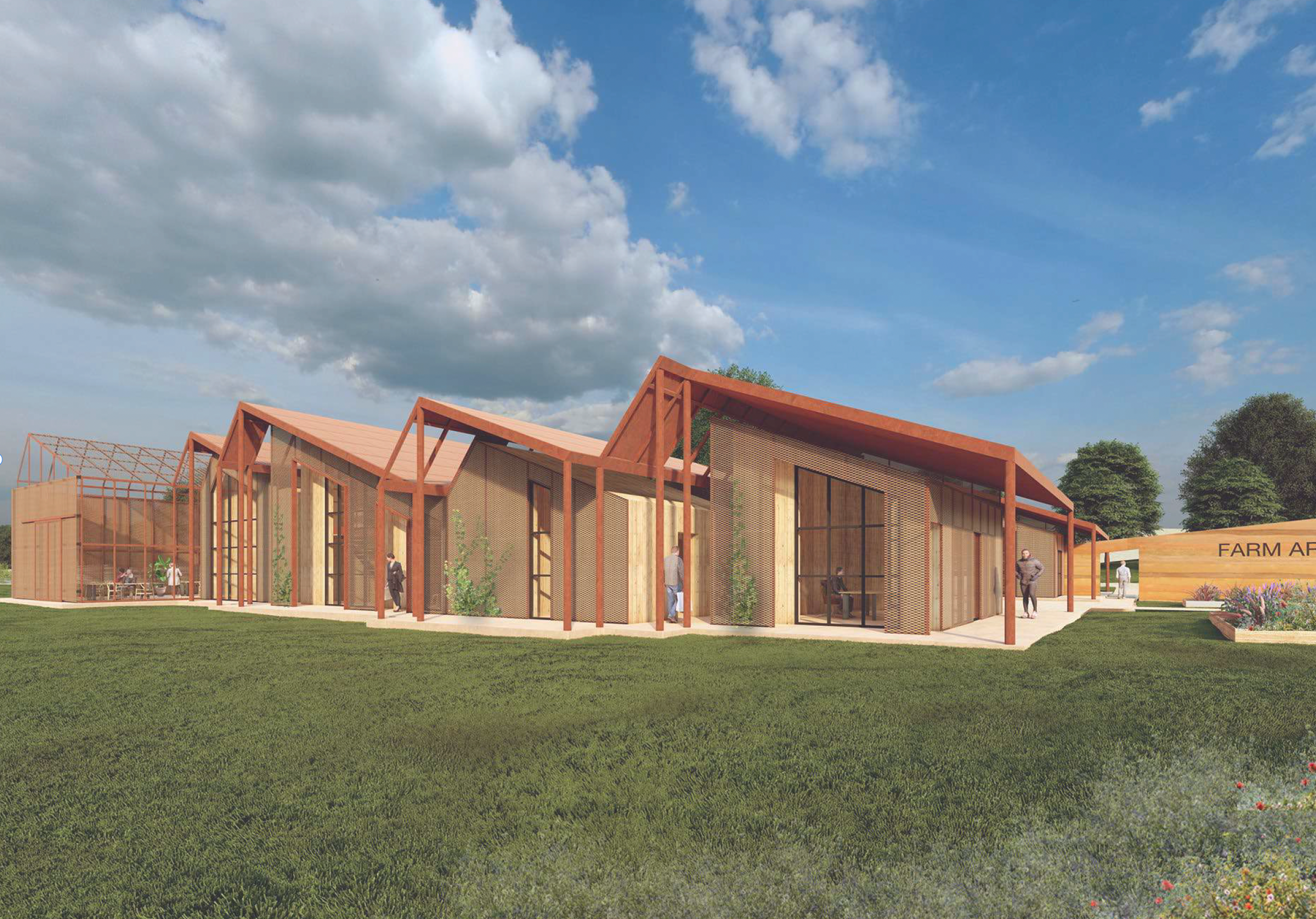How the farm is imagining the climate-friendly future of agriculture

Farming is inseparable from humanity. It underpins society as we know it, the practice being the driving force behind our species’ ability to do more than simply survive. From new trade routes to the industrial revolution, as the world has changed, so has agriculture.
Yet, there is another change on the horizon, a new revolution waiting to happen; to be fit for the future, farming must embrace sustainability.
In 2020, agriculture and forestry accounted for 3.2% of energy usage in the EU, rising to a high of 9% in The Netherlands. Furthermore, 56% of this energy was produced by oil and petroleum products.
While these figures have been trending down in the past decade, things aren’t happening quickly enough — especially considering the desperate need to move away from fossil fuels.
Thankfully though, there are schemes trying to solve this issue, and one of those is the Farm.
What is the Farm?
Based in Piedmont in northwest Italy, this project aims to showcase a new concept of organic farming. The central idea is to create a zero-emission environment, one where energy production and consumption are balanced, creating a closed-loop system that is as self-sustaining as possible. It will use the newest agricultural and building technologies to not only ensure high crop yields, but also be as green as possible.
The concept mixes modern and traditional ideas of farming to create something that’s the best of both worlds. The area itself consists of garden zones, greenhouses for growing produce, offices, co-working spaces, and a lab.
Alongside this, the entire structure is designed to fit into the local, natural environment. The Farm’s goal isn’t merely to be a location for technical experimentation, but also to create something that pays homage to the area’s legacy.

Looking local
If agriculture is going to shift into a more sustainable model, one of the most important steps is to be in tune with the local environment — and this is something the farm area has prioritized.
For example, the structures in the concept will be created using materials from its surroundings. Beyond that, they’re designed to echo traditional buildings from the area, with the sloped roofs in particular being a local characteristic.
The crops being grown are also a key part of this puzzle. Agriculture today focuses on monocultural systems, which effectively means growing huge amounts of a limited number of crops. This can be useful for efficiency, but it also damages the environment over time, making it vulnerable and exposed.
The farm area, on the other hand, will focus on making a resilient landscape with diversified agricultural production systems. This uses a variety of local plant life that helps support its surroundings and align with the natural environment, a vital part of the industry’s future.
Part of the community
There will be more to the Farm than agriculture though; the project contains a huge participation aspect too.
Alongside the greenhouses, the concept includes offices and co-working areas. This is all part of a plan to connect local people and build a fully functioning community around the concept. Schools and universities in the surroundings will also be involved, the farm providing a place for both learning and research.
The concept will also include a fully-functioning laboratory that will concentrate on studying the local area. One area the project’s creators want this to focus on is truffles, which will make up part of the farm. In the future, this lab-based research will be expanded to other local produce, including food and wines.
It's a material matter
Of course, the Farm needs to be built. The environmental impact of this has been carefully analyzed, as often this process is incredibly damaging for the climate. For example, embodied carbon in buildings is thought to account for 11% of global carbon emissions, as well as around 75% of a building’s lifetime emissions.
The Farm has taken this in its stride, not only focusing on reducing the carbon footprint of bringing the concept to life, but also its reversibility. Let’s look at the former first.
To begin with, the buildings were designed to use as many locally sourced materials as possible, including elements like natural lime. The structures themselves will be constructed mainly from wood — arguably the most carbon-neutral building material — while any steel used in the process is from recycled sources.
The buildings’ foundations have been selected just as carefully. The Farm team weighed up the benefits of both micropiling and traditional slab foundations, settling on the latter. This was chosen specifically after discovering they could use low carbon concrete, and restrict the thickness and volumes of slab foundations to ensure as little embedded carbon as possible.
Now, let’s talk about the reversibility of the Farm.
For some context, this is a building practice focused on creating structures that can be altered to adapt to their owners’ needs. In other words, buildings that can be made bigger or smaller without needing to be entirely rebuilt. Considering the carbon intensiveness of creating entirely new structures, this can prevent a huge amount of emissions over the Farm’s lifetime, allowing the site to adjust to whatever changes the future brings.

Innovations in energy
A core aspect of the Farm is the idea of a closed-loop system, where the area generates the energy resources it needs — something it will do in a variety of ways.
The first and most notable is its photovoltaic system. Effectively a form of solar panels, these line the tops of the greenhouses, office buildings, and other structures, providing power throughout the complex.
Aside from this, geothermal energy will also be used to heat the buildings at the Farm complex, meaning there’ll be no need for gas-powered heaters to regulate temperature. The project will also collect rainwater and use phytodepuration techniques to recycle wastewater from across the area.
Combined, these techniques enable a closed-loop energy system which will be able to power the area in a sustainable way.
When will we see the Farm in action — and what does its future hold?
While the concept and planning stages of the project are complete, the team are currently awaiting building permits. If everything goes to plan, these will be approved in the summer of this year. From that point, it’ll take around two years to build.
Beyond that though, the Farm has lofty ambitions. The project’s goal is to become a new model for sustainable agriculture and architecture, a concept that can inspire people across all areas of the world to combine modern technologies with intimate, local knowledge. The research and development of the concept will be open source, meaning anyone can benefit from their experience.
The planet is ready for a new agricultural revolution — and the area might just show us the way.
This article was written based on an interview with Lara Sappa and Corrado Curti.